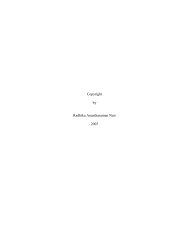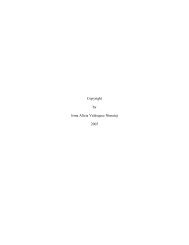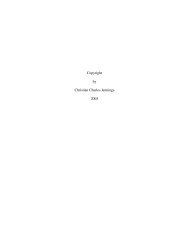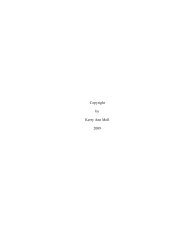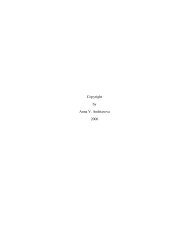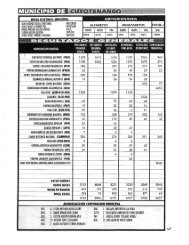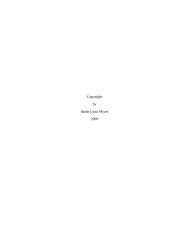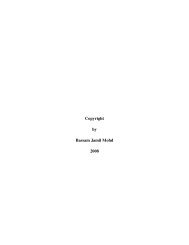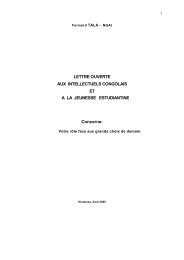Shawyer dissertation May 2008 final version - The University of ...
Shawyer dissertation May 2008 final version - The University of ...
Shawyer dissertation May 2008 final version - The University of ...
You also want an ePaper? Increase the reach of your titles
YUMPU automatically turns print PDFs into web optimized ePapers that Google loves.
Most <strong>of</strong> the dozen core Yippies were men; histories <strong>of</strong> the Yippies include onlythree women in this group: Anita H<strong>of</strong>fman, Nancy Kurshan, and Judy Lampe. 22Nevertheless the women were as actively involved in the movement as the men. Forexample, at the March, 1968, Grand Central Station Yip-In, Anita H<strong>of</strong>fman spoke toreporters about Yippie plans for the Festival <strong>of</strong> Life in Chicago (Michael Stern 72). Shealso skirmished with nightstick-wielding policemen, putting herself into physical danger.Village Voice photographer Fred W. McDarrah captured her reaching across a police linetoward Abbie as the police attempt to chase the demonstrators away (McDarrah 124). Aswell, Anita H<strong>of</strong>fman and Kurshan were present at the New Year’s Eve party that createdYippie. With Judy Lampe, they worked hard to turn the idea <strong>of</strong> Yippie into reality, evento the point <strong>of</strong> putting their bodies on the line.Despite their commitment to the movement, these women did not enjoy the sameprivilege within the Yippie movement as their male counterparts. <strong>The</strong> Yippies werefocused on political issues like the Vietnam War and did not stop to consider feminism orgender roles, even though the late 1960s saw a flourishing <strong>of</strong> feminist activism in theUnited States. This was typical for activist organizations at the time: the anarchist art22 <strong>The</strong>re are no histories <strong>of</strong> the Yippie movement as a whole. Histories <strong>of</strong> the Yippies include memoirs byYippies themselves, biographies, and histories <strong>of</strong> the Chicago convention. In the first category areKrassner’s How a Satirical Editor Became a Yippie Conspirator in Ten Easy Years (1971), written duringthe passion <strong>of</strong> the Yippie movement, Rubin’s earnest Growing (Up) at Thirty-Seven (1976), H<strong>of</strong>fman’smore distanced and meditative Soon to be a Major Motion Picture (1980), and Krassner’s second, morenostalgic, memoir Confessions <strong>of</strong> a Raving, Unconfined Nut: Misadventures in the Counter-Culture (1993).In the second category are three fairly genial Abbie H<strong>of</strong>fman biographies: Yippie historian Marty Jezer’sAbbie H<strong>of</strong>fman: American Rebel (1992), Jack H<strong>of</strong>fman and Daniel Simon’s Run Run Run: <strong>The</strong> Lives <strong>of</strong>Abbie H<strong>of</strong>fman (1994), and Jonah Raskin’s For the Hell <strong>of</strong> It: <strong>The</strong> Life and Times <strong>of</strong> Abbie H<strong>of</strong>fman (1996),as well as Larry Sloman’s compilation <strong>of</strong> memoirs and interviews, Steal this Dream: Abbie H<strong>of</strong>fman andthe Countercultural Revolution in America (1998). Finally, Milton Viorst dedicates a chapter to the radicalactions <strong>of</strong> Jerry Rubin and the Yippies in Fire in the Streets: America in the 1960s (1979), and DavidFarber also addresses their more violent and radical nature in Chicago ‘68 (1988).37



